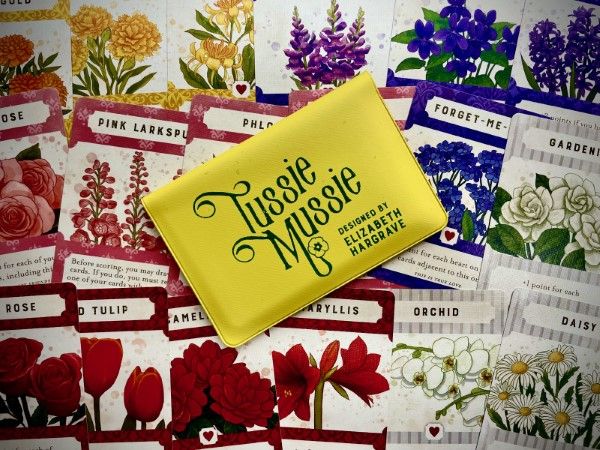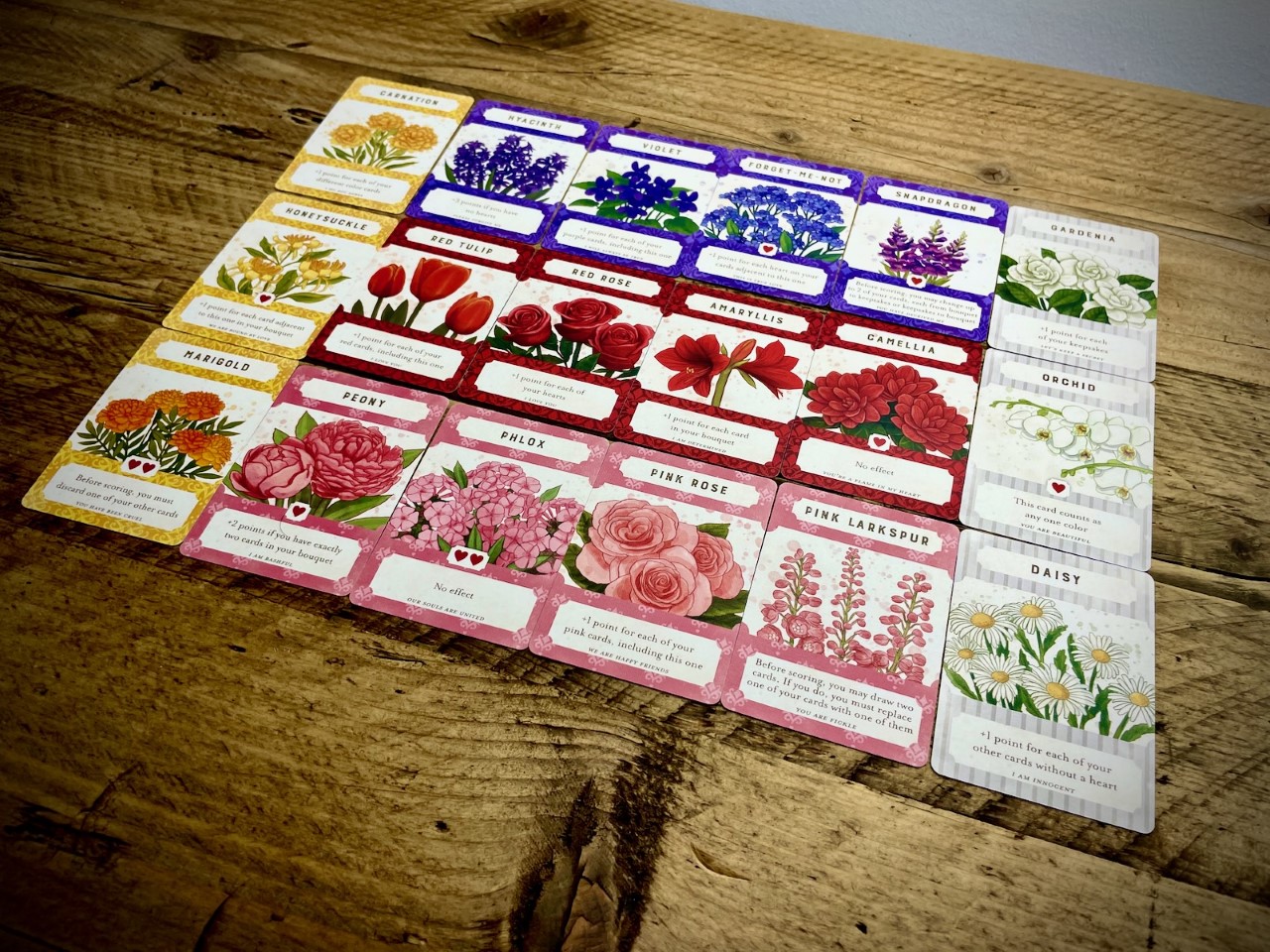Tussie Mussie: A Bouquet of Fun

Tussie Mussies are bouquets of flowers and garden blooms arranged in concentric circles. It was customary to send messages of love or friendship with Tussie Mussies during the Victorian era. They were carefully crafted to convey subtle messages to their recipients based on the ideals of elegance and discretion. The basic premise of the Tussie Mussie game is that each player has access to a shared pool of drafting cards, the "garden of flowers," and using "I Cut, You Choose" drafting, they will create their Tussie Mussie, which is composed of bouquet cards and keepsakes. Now you can choose the perfect flowers to create a winning Tussie Mussie of your own!
Elizabeth Hargrave, the creator of Wingspan, designed Tussie Mussie. She won an eighteen-card contest by Button Shy Games with Tussie Mussie. Given these reasons, we can only expect positive things from the game, and it does deliver.
Tussie Mussie is a game for 2-4 players, best played with two. A match may take 20-30 minutes. This game combines elements of strategy with luck to create an entertaining and interactive experience.

A Twist on “I Cut, You Choose” Gameplay Mechanics
Shuffle the cards and place them face-down to create the drafting deck during set-up. Deal four cards to each player.
At each step, offer two cards to the player on your left; the next time, you will pass them to the player on your right, who will choose one. One of the two cards is face-up, and the other is face-down. Arrange the cards from left to right in front of you, and keep them face-up or face-down as they are handed to you. When everyone has a Tussie Mussie of four flowers (cards), the round ends, and you must do some pre-preparation before counting your score. Keep the cards in order, but move face-down cards to a lower position than the others because they are your keepsakes. You can now flip them face-up. Move the already visible "bouquet" flowers to a higher level. When scoring, some cards have points depicted as hearts, and some have their "own rules for scoring" (such as multipliers for cards with specific characteristics).

The Art of Deception and Outsmarting Your Opponent
I learned about Tussie Mussie and Button Shy Games through Elizabeth Hargrave (designer of Wingspan). I was fascinated with the vision of Button Shy and their unique approach of focusing on designing pocket-sized games (generally 18 cards) with hand-assembled wallets and a new release every month. Elizabeth Hargrave and Button Shy are a perfect combination.
When we started playing Button Shy games at home and with friends, we all fell in love with the games. Tussie Mussie was my first Button Shy game, and it became one of our must-play games before going to sleep. I knew that I had to review Button Shy games. Tussie Mussie combines a series of game mechanics such as "set collection," "open drafting," "I cut, you choose," and a lot of betting and bluffing. It reminds me a lot of Love Letter games.
The game relies heavily on the "I cut, you choose" mechanics, keeping player interaction high and engaging. You must learn to be deceitful and outsmart your opponent; I would compare it with a game of poker, which is very straightforward to learn and play but hard to master. Designed uncertainty and stochastic contingency play a role in the game, and a "bad hand" can make it hard to win. The game combines strategy elements with luck to create an entertaining and interactive experience. And that is okay because performance contingency substantially impacts the game above randomness.
In terms of performance contingency, it is essential to note that while it is a strategic game, you must be cunning and deceitful and should not play nicely if you want to win. You must not only read your opponent’s body language and grasp their strategy but also deceive and push your adversary to choose the card you want them to choose.
Tussie Mussie’s Material Involvement is low because, after all, you're playing with cards (one exception to the rule is Battlecrest, though). The same happens for the Narrative Involvement because the backstory is very lightweight. These two points are not a criticism but a description of the game style; this game fits best between abstract games and narrative-based legacy games.
However, what it lacks in Material and Narrative Involvement, it makes up through Fictional Involvement. Fictional Involvement through nature-themed games is a signature of Elizabeth's work. And it's exceptionally represented in Tussie Mussie. You feel like you are preparing a bouquet of flowers, which is a pleasant experience. Consider that it is being said by someone who would never have imagined that it could be a pleasurable activity.
Everyone I introduced the game to was immediately attracted to it because of its outstanding artwork. It does have table presence, and I've seen people stopping by a few times, curious to know more about the game.
The components' quality fits the high quality expected from Button Shy wallet card games.
The game has zero set-up and tear-down, and downtime is usually minimal because your options are limited while still impactful. The game complexity is minimal. However, playing it strategically, deceitfully, and outsmarting your opponents may take time to master. The game has a tiny element of randomness, but it is well-balanced. It is a great filler and gateway game.

Final Thoughts
I had high expectations for Tussie Mussie because I admire Elizabeth Hargrave, and I had the fantastic opportunity to discuss her design process and talk about Tussie Mussie and Button Shy. Tussie Mussie met my expectations, and I can't wait to review the expansions and the Solo mode. And to conclude, this game is gorgeous, beautifully illustrated, and with clear iconography that makes the game intuitive, simple to understand, and easy to learn.
If you are looking for a quick, light abstract game with some elements of luck but mainly based on being deceitful and strategic, I highly suggest Tussie Mussie.
Pros:
- The game is gorgeous.
- Clever, quick, and fast-paced.
- Love it or hate it.
- There is plenty of replayability in the long run.
Cons:
- It is not the game you would choose to fill a long game night.
Note: This article is provided by Roll & Mind.






